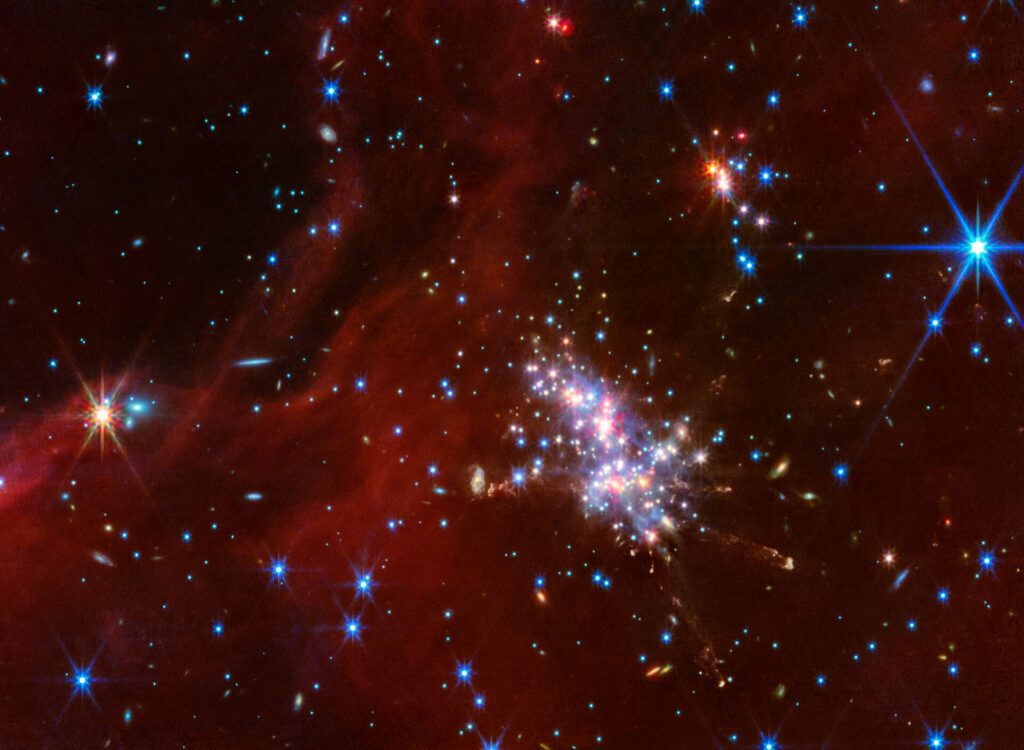The James Webb Space Telescope (JWST) has photographed star nurseries located at the very edge of the Milky Way. They are located more than 58,000 light-years away from the galactic center.

The researchers’ goal was to obtain images of the regions of two molecular clouds known as the Digel clouds. They used NIRCam (Near-Infrared Camera) and MIRI (Mid-Infrared Instrument) mounted on JWST for their observations.
Thanks to its high sensitivity and resolution, JWST was able to observe the regions of interest to the researchers, where star clusters undergoing bursts of star formation are located, with unprecedented detail.
In the case of Cloud 2S, captured in the image presented, JWST detected a cluster containing newly formed stars. Previously, scientists suspected its existence, but only space telescope data allowed to confirm this assumption. This dense region is very active. Several newborn stars emit extended jets of matter along their poles.
According to astronomers, they plan to continue studying this distant region on the edge of the Milky Way in the future. They are trying to understand how a particular environment can influence the formation of different types of stars.
We previously told you about how JWST photographed a question mark-shaped galaxy.
According to ESA


